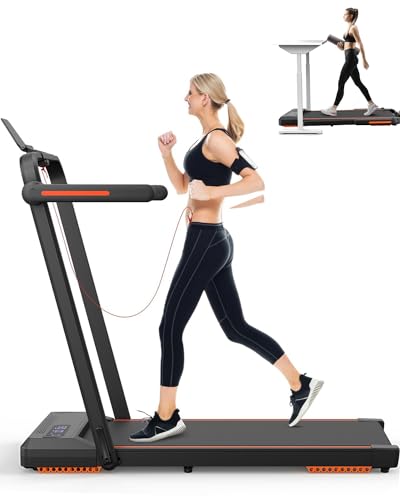What Experts Say You Should Know?
Treadmills: A Comprehensive Guide to Understanding Their Functionality, Benefits, and Appropriate Selection
Introduction
Treadmills have become a staple in modern-day physical fitness routines, both in homes and fitness centers worldwide. They provide a practical and efficient way to keep cardiovascular health, boost endurance, and help in weight management. This article explores the various types of treadmills, their benefits, features to think about when acquiring, and some FAQs to guide users in making notified decisions.
Kinds of Treadmills
When it comes to selecting a treadmill, it is essential to understand the various types offered in the market. Here are the primary classifications:

1. Manual Treadmills
- System: These treadmills have a simple design and rely on the user’s efforts to move the belt.
- Pros: More cost effective, quieter operation, no electrical power required.
- Cons: Limited functions, may not offer the very same variety of workout intensity.
2. Motorized Treadmills
- Mechanism: Powered by a motor that drives the belt, allowing users to stroll or run at a set speed.
- Pros: Greater range of speeds and slopes, equipped with various functions such as heart rate screens and exercise programs.
- Cons: More pricey and may need more upkeep.
3. Folding Treadmills
- Mechanism: Designed for those with restricted area, these treadmills can be folded for simple storage.
- Pros: Space-saving, often motorized, versatile functions.
- Cons: May be less resilient than non-folding designs.
4. Industrial Treadmills
- Mechanism: High-quality machines created for use in fitness centers and gym.
- Pros: Built to hold up against heavy use, advanced features, often include service warranties.
- Cons: Pricey and not ideal for home use due to size.
5. Curved Treadmills
- Mechanism: A special style that allows users to propel the belt using their own energy.
- Pros: Offers a more natural running experience, promotes better running kind.
- Cons: More expensive and can be noisier.
| Treadmill Type | Pros | Cons |
|---|---|---|
| Handbook | Budget-friendly, no electrical power needed | Minimal features |
| Motorized | Range of speeds, advanced functions | Maintenance needed |
| Folding | Space-saving, frequently motorized | May do not have sturdiness |
| Business | Built to last, professional-grade features | Costly |
| Curved | Natural running experience, promotes excellent form | Greater rate |
Advantages of Using Treadmills
Treadmills use numerous benefits that can contribute to one’s general health and physical fitness goals. Some of these advantages consist of:
- Convenient Workouts: Treadmills allow users to work out inside despite weather condition conditions.
- Cardiovascular Health: Regular use can enhance heart health by increasing endurance and promoting healthy flow.
- Weight Management: Effective for burning calories, which assists in weight reduction and management.
- Personalized Workouts: Users can control speed, incline, and period to produce tailored exercise experiences.
- Security: Treadmills offer a foreseeable surface area, minimizing the risk of falls compared to outside running.
- Multifunctional: Many treadmills come with features like heart rate screens, exercise programs, and even entertainment systems.
Choosing the Right Treadmill
When selecting a treadmill, possible buyers must consider a number of crucial elements:
Features to Consider:
- Motor Power: Typically measured in horsepower (HP), a motor strength of a minimum of 2.5 HP is advised for major runners.
- Belt Size: A longer and broader belt accommodates numerous stride lengths, offering convenience throughout exercises.
- Incline Settings: Adjustable incline functions simulate outdoor hill running and can increase exercise strength.
- Weight Capacity: Ensure the treadmill can support the user’s weight for safety and durability.
- Console Features: Look for user-friendly dashboards, exercise programs, and Bluetooth compatibility for streaming music or other functions.
Budget plan Considerations
- Under ₤ 500: Entry-level manual treadmills appropriate for casual walkers.
- ₤ 500 – ₤ 1,500: Mid-range motorized treadmills that provide more features and better sturdiness.
- ₤ 1,500 – ₤ 3,000: High-end designs with innovative innovation, bigger motors, and longer warranties.
- Over ₤ 3,000: Commercial-grade treadmills ideal for frequent use in health clubs or training facilities.
Often Asked Questions (FAQs)
1. How typically should I utilize a treadmill?
It is suggested to use a treadmill at least three to five times a week, including different strength levels for best results.
2. Can I slim down by utilizing a treadmill?
Yes, constant use of a treadmill can contribute to weight loss, especially when integrated with a well balanced diet and strength training.
3. What is the best speed to walk on a treadmill for newbies?
A speed of 3 to 4 miles per hour is a suitable variety for novices. It’s important to begin sluggish and slowly increase pace as convenience and endurance enhance.
4. Do I need to use a treadmill if I already run outdoors?
Utilizing a treadmill can supply fringe benefits, such as controlled environments and differed exercises (slope, intervals) that are not constantly possible outdoors.
5. How do I maintain my treadmill?
Routine upkeep includes lubing the belt, cleaning up the deck and console, and checking the motor for optimum performance.
Treadmills are important tools for those wanting to enhance their physical fitness levels in a regulated and practical manner. With various types offered, comprehending their features and benefits is crucial for making an informed purchase. By thinking about individual exercise needs, area schedule, and budget plan restrictions, individuals can find the most appropriate treadmill that fits their lifestyle. Incorporating treadmill workouts into a well balanced physical fitness regimen can lead to enhanced health results and an enjoyable workout experience.


